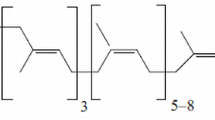Summary
A study was made of agglutinating properties of phytohemagglutinin obtained from the Sax variety ofPhaseolus vulgaris (according to Rigas and Osgood's method) in the form of a protein. Agglutinating properties of phytohemagglutinin were tested against human (A, B, O), rabbit, rat, rooster and frog erythrocytes; single-layered human tissue cultures—normal cutaneous epithelium (strain No. 580), fibroblasts (strain No. 558), amnion (strain A-1); malignant cells of multilayered human tissue cultures—stomach cancer (strain Cave), cancer of the uterus (strain HeLa), cancer of the larynx (strain HEp-2); against malignant cells of experimental mouse cancer (Ehrlich's strain), cancer of the rat ovary (strain OR). Agglutination properties were also tested against an intestinal group of bacteria:Bacterium coli (strains C-85 and K-12) andBacterium prodigiosum (strain No. 10).
As shown, phytohemagglutinins obtained from the Sax variety ofPhaseolus vulgaris possessed high hemagglutinating properties. They were especially marked against mouse erythrocytes and comparatively weak against those of a frog. The preparation also possessed cytoagglutinating properties against all the cellular strains investigated. They were especially well pronounced in the instance of stomach cancer cells and least pronounced in that of uterus cancer cells, those of the larynx and cutaneous epithelium cancer. Phytohemagglutinin did not agglutinate the strains of bacteria examined. Agglutinating properties of the preparation are intensified after keeping it in a refrigerator (4°C).
Similar content being viewed by others
Literature Cited
O. G. Birger and I. L. Krichevskii, Khar'kovsk. med. zh., 1917,23, No. 2-3, p. 113.
P. N. Kosyakov, Antigenic substances in the organism and their significance in biology and medicine. Moscow, 1954, p. 177.
W. C. Boyd and R. M. Roguera, J. Immunol, 1949, v. 62, p. 333.
M. Coulet, M. Bezou, and B. Cognet, Bull. Soc. Chim. biol (Paris), 1959, v. 41, p. 1385.
M. Dorset and R. R. Henley, J. agric. Res. 1915–1916, v. 6, p. 333.
V. R. Goddard and L. B. Mendel, J. biol. Chem., 1929, v. 82, p. 447.
W. J. Hungester and G. Van Halsema, Proc. Soc. exp. Biol. (N. Y.), 1953, v. 83, p. 863.
K. Landsteiner and H. Raubitschek, Cbl. Bact. I. Abt. Orig., 1908, Bd. 45, S. 660.
J. G. Li and E. E. Osgood, Blood, 1949, v. 4, p. 670.
I. E. Liener and T. A. Seto, Cancer Res., 1955, v. 15, p. 407.
P. S. Moorhead et al., Exp. Cell Res., 1960, v. 20, p. 613.
P. C. Nowell, Cancer Res., 1960, v. 20, p. 462.
W. J. Nungester, R. F. Haines, et al., Cancer Res., v. 20, p. 480.
T. B. Osborne, L. B. Mendel, and J. F. Harris, Am. J. Physiol., 1960, v. 14, p. 259.
D. A. Rigas, J. G. Li, and E. E. Osgood, Am. J. Med., 1951, v. 10, p. 776.
D. A. Rigas and E. E. Osgood, J. Biol. Chem., 1955, v. 212, p. 607.
Author information
Authors and Affiliations
Rights and permissions
About this article
Cite this article
Tsoneva-Maneva, M.T., Ugryumov, E.P. A study of the agglutinating properties of phytohemagglutinin obtained from sax variety of phaseolus vulgaris. Bull Exp Biol Med 55, 182–185 (1964). https://doi.org/10.1007/BF00798827
Received:
Issue Date:
DOI: https://doi.org/10.1007/BF00798827




